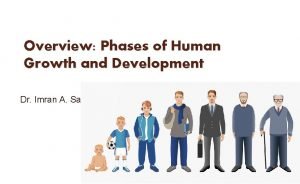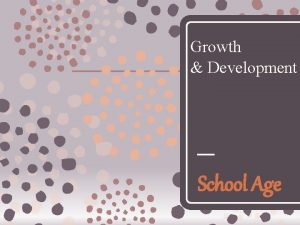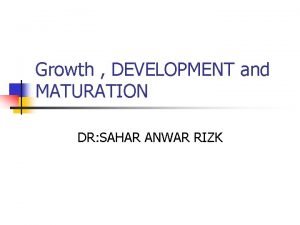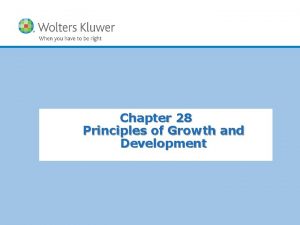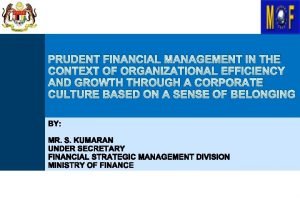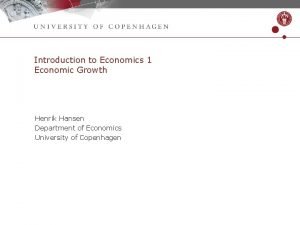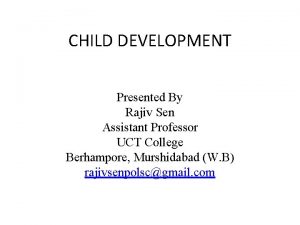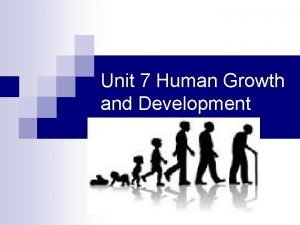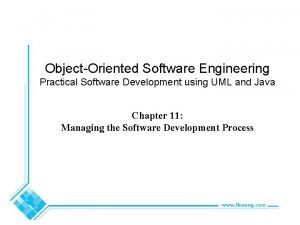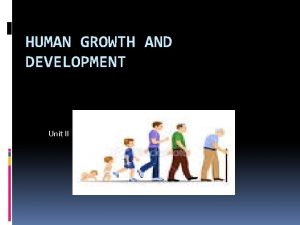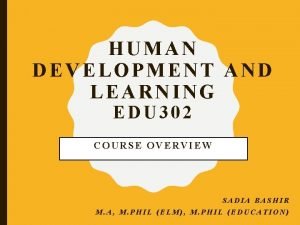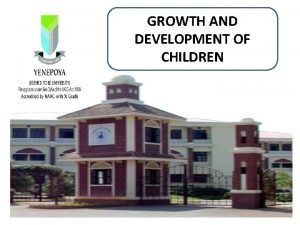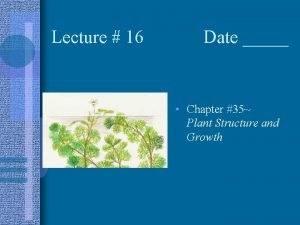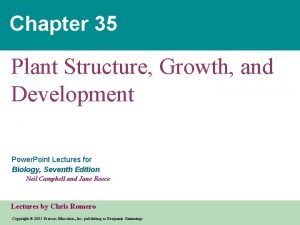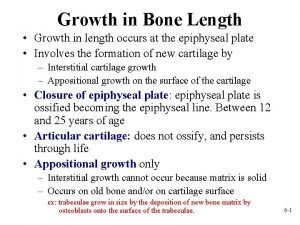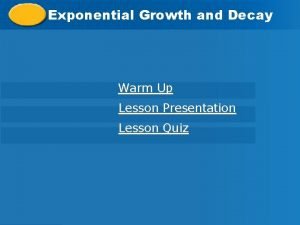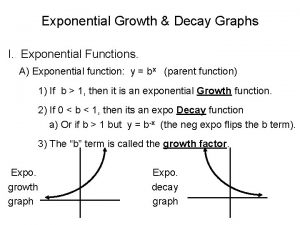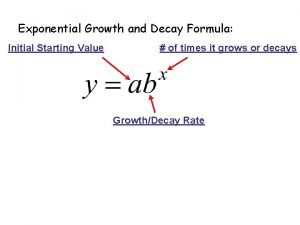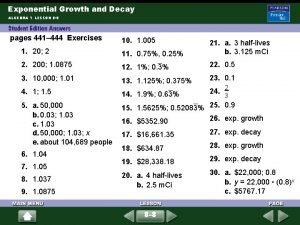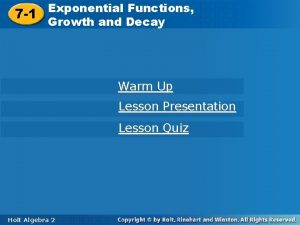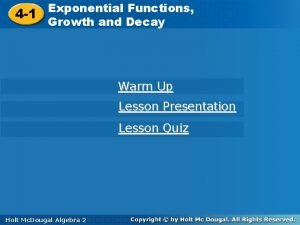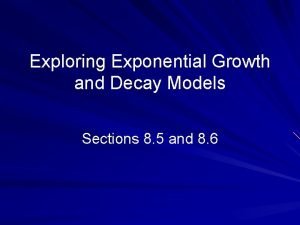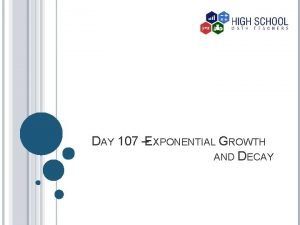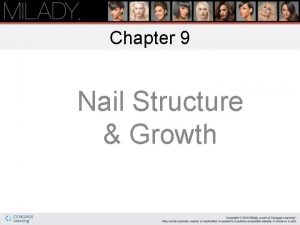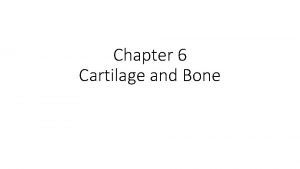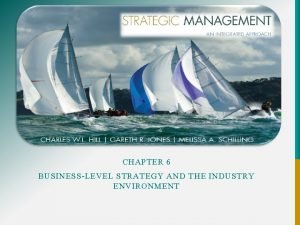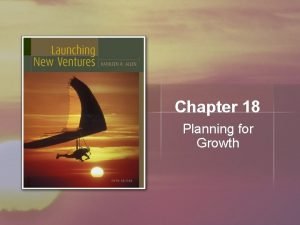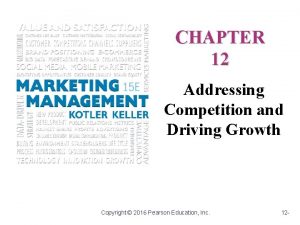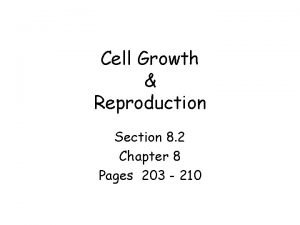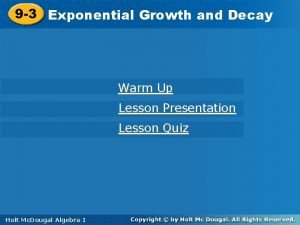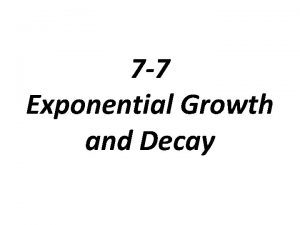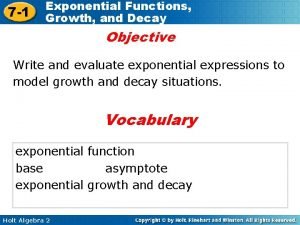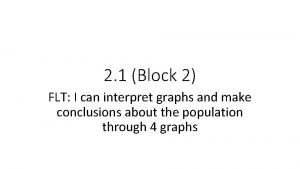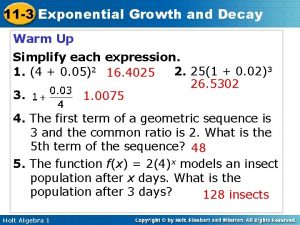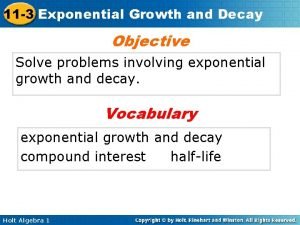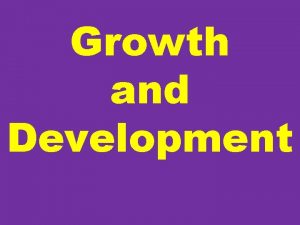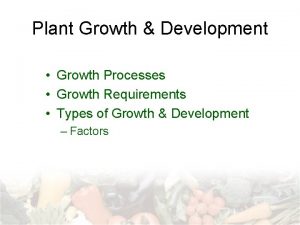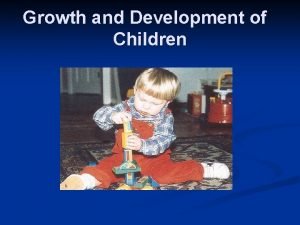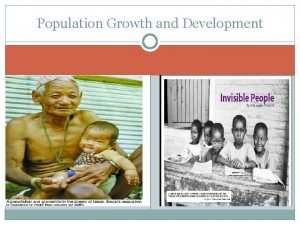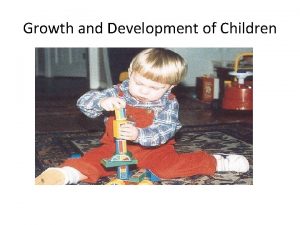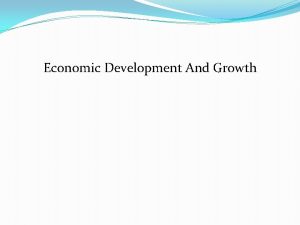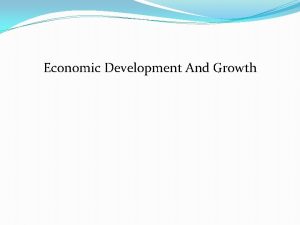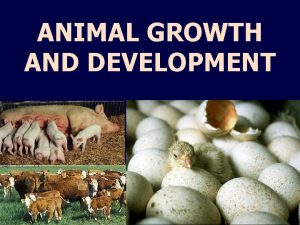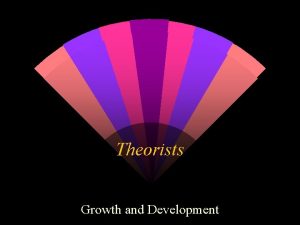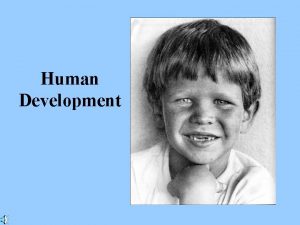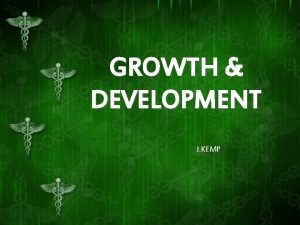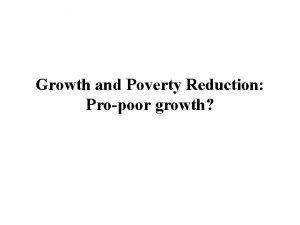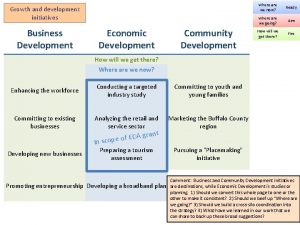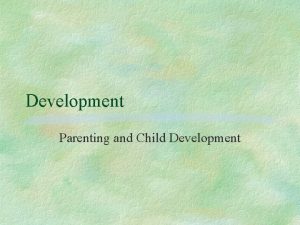Growth and Development Growth and Development Growth An




































































- Slides: 68

Growth and Development

Growth and Development

• Growth An irreversible increase in size of an organism • Development a biological unfolding of events involving an organism changing gradually from a simple to a more complex level in its life history

Lesson Objective: b) a) Define growth 3 phases of individual growth GROWTH • Growth is the permanent and irreversible increase in the parameter quantity ( biomass, length, width, height, mass, surface area, volume and size over a specific time ) • Three phases of individual growth: i. Cell division ii. Cell enlargement iii. Cell differentiation CHAPTER : GROWTH

Lesson Objective: b) a) Define growth 3 phases of individual growth i. Cells division or mitosis - the basis of growth - by increasing the number of cells ii. Cell enlargement • Plants - cells grow by adding organic material to their cytoplasm, or - addition of water, into the large central vacuole, accounts for 90% of plant cell’s expansion • Animals - cells grow by synthesizing a protein- rich cytoplasm, a metabolically expensive process CHAPTER : GROWTH

Lesson Objective: b) iii. Cell differentiation – The process of specialization of cells with the same set of genetic information to produce a diversity of cell types – Differentiation reflects the synthesis of different proteins in different types of cells. CHAPTER : GROWTH a) Define growth 3 phases of individual growth

Lesson Objective: Explain how growth is measured MEASUREMENT OF GROWTH • Growth involves the increasing of protoplasm of an organism. • Growth can be estimated by measuring a particular parameter over a specific time. • Suggest some parameters and commonly used to measure growth: CHAPTER : GROWTH

Lesson Objective: Explain how growth is measured MEASUREMENT OF GROWTH • Growth involves the increasing of protoplasm of an organism. • The best parameter and commonly used to measure growth are: – Biomass ( dry or fresh ) – Length – Width – Size – Height – Surface Area – Volume – Number CHAPTER : GROWTH

Lesson Objective: Explain how growth is measured Estimate length / height • Periodic linear measurement Eg: Measuring height for human being – the best way to measure the growth of an individual • Do you think height is a suitable parameter to measure the growth of a plant? Why? CHAPTER : GROWTH

Lesson Objective: Explain how growth is measured Estimate length / height • For plant, height is NOT a suitable parameter because height of a tree does not give much information about the growth of branches, leaves, root and the food storage structures underneath the ground. • So, the parameter chosen should be appropriate to the organism whose growth is to be measured. CHAPTER : GROWTH

Lesson Objective: Explain how growth is measured …MEASUREMENT OF GROWTH Fresh ( wet ) mass • Method : the mass without internal water removed • Advantages : – Easy and convenient – Need not to kill the organism so its growth can be measured repeatedly • Disadvantage: – inaccurate and unbalanced measurement • fluctuation or varying water volume in the live organism ( water ~ 70 - 90% wet mass ) – Shows greater variation due to the environment or the organism behavior CHAPTER : GROWTH

Lesson Objective: Explain how growth is measured …MEASUREMENT OF GROWTH Dry mass • Method : – Mass of organism after removing all the water from its body ( drying process ) – Kill the specimen – Dry in the oven ( ~110 °C ) – Cool the sample in the dryer, repeatedly measured the weight and cool until get a constant weight – dry mass value CHAPTER : GROWTH

Lesson Objective: Explain how growth is measured …MEASUREMENT OF GROWTH …Dry mass • Advantages : ~ Accurate measurement of the amount of organ matter present • Disadvantage: ~ Organisms are killed so growth of the same specimen cannot be repeatedly measure ~ Large samples of genetically identical organism need to be grown under similar conditions. ~ Time consuming CHAPTER : GROWTH

Lesson Objective: Explain how growth is measured …MEASUREMENT OF GROWTH Surface area • Surface area of a leave can be determine by draw the outline of the leave at a graph paper or square paper (1 cm x 1 cm) and count the square inside the leave outline • What is the surface are for the leave? / / / / / • 20 cm 2 CHAPTER : GROWTH

Growth and Development Growth patterns a) Explain sigmoid growth curve ( organism and population ) b) Explain human growth curve c) Explain limited growth curve ( annual plants ) and unlimited growth curve ( perennial plants ) d) Explain isometric growth ( fish ) and allometric growth ( human organs ) e) Explain intermittent growth curve ( arthropods )

Growth pattern and Growth rate

Lesson Objective: a) Describe absolute growth curve b) Describe absolute growth rate curve …GROWTH RATE …Types of growth curves 1. Absolute / Actual / Sigmoid growth curve • If a growth parameter ( height or mass of an organism ) for any specimen is plotted against time, it will produce a growth curve. • After an initial relatively slow start, there is a rapid period of growth until maturity is reached, when growth slows down and stops. • it usually gives an S-shaped or sigmoid curve. CHAPTER : GROWTH

Lesson Objective: a) Explain sigmoid growth curve ( organism and population ) Organism that have a sigmoid growth curve are: - • Individual organism / large size of multi cell plants / animals • Microorganism population ( yeast, bacteria ) CHAPTER : GROWTH

Lesson Objective: a) Describe absolute growth curve b) Describe absolute growth rate curve Sigmoid growth curve This type of curve can be divided into 5 phases: D C A Lag phase E F B Logarithmic phase Stationary phase Retardation phase Death phase CHAPTER : GROWTH

Lesson Objective: a) Describe absolute growth curve b) Describe absolute growth rate curve Absolute growth curve i. Lag phase AB – Very little growth – Cells divide and expand slowly – Organism trying to adapt to the new environment ii. Log phase / Exponential growth phase BC – Very rapid / exponential growth – A period of no constraints on growth – Adequate nutrients and no accumulation of waste products CHAPTER : GROWTH

Lesson Objective: a) Describe absolute growth curve b) Describe absolute growth rate curve Absolute growth curve iii. Retardation phase / Linear growth phase CD – A decelerating phase – Relatively constant growth – A period when the growth rate becomes limited by internal factor ( maturity of the organism ) & external factors reduced food supply & limited space due to competition ), or both factors CHAPTER : GROWTH

Lesson Objective: a) Describe absolute growth curve b) Describe absolute growth rate curve Absolute growth curve iv. Stationary phase / Equilibrium phase DE – – – A stable equilibrium phase The organism or the population reach maturity The rate of cell division = the rate of cell mortality The size of the organism remains constant. (~max) Nutrients and spaces decreased Accumulation of waste product CHAPTER : GROWTH

Lesson Objective: a) Describe absolute growth curve b) Describe absolute growth rate curve Absolute growth curve v. Death phase / Negative growth phase EF – also known as the ageing stage – due to obstacles such as the ageing process or reduced resources ( food & space ) – The growth rate falls drastically. CHAPTER : GROWTH

Lesson Objective: b) a) Describe absolute growth curve Describe absolute growth rate curve Types of growth curves • • Growth curves are very similar for most organism, whether animals or plants Three types of growth curves: - 1. Absolute growth curve/ Sigmoid growth curve / Actual growth curve 2. Absolute growth rate curve 3. Relative growth rate curve CHAPTER : GROWTH

Lesson Objective: b) 2. Absolute growth rate curve • Is a measure of increase in size ( eg: height, mass ) over a series of equal time intervals. • Show amount of growth per time interval in the life history • Bell-shaped graph • The growth rate of an organism or a population increases with time until it achieves a maximum level, after which the growth rate decreases until it become zero. CHAPTER : GROWTH a) Describe absolute growth curve Describe absolute growth rate curve

Lesson Objective: b) a) Describe absolute growth curve Describe absolute growth rate curve Absolute growth rate = dx , dt where: dx = size increased dt = period of time CHAPTER : GROWTH

Lesson Objective: a) Relative growth rate • Is a measure of increase in size ( eg: height, mass ) over a series of equal time intervals relative to the amount of growth already present. Relative growth rate curve • relative growth rate often declines as the organism mature or age CHAPTER : GROWTH Describe Relative growth rate curve

Lesson Objective: a) Growth and growth rate curves . CHAPTER : GROWTH Describe Relative growth rate curve

Lesson Objective: d) Explain isometric growth ( fish ) GROWTH PATTERNS ISOMETRIC GROWTH • Isometric ( isos = same; metron = measure ) ~ the organs of organism develop at same rate as other parts of its body. • In this situation change in size of the organism is not accompanied by a change in shape of the organism. • The relative proportion of the organs and whole body ( size & shape ) remain the same. • Examples: - fish and certain insects. CHAPTER : GROWTH

Lesson Objective: d) Explain isometric growth ( fish ) ISOMETRIC GROWTH CHAPTER : GROWTH

Lesson Objective: d) Explain allometric growth ( human organs ) ALLOMETRIC GROWTH • Allometric ( allos =other; metron=measure ) • the growth of the organs of an organism occur at a rate that is different from the overall growth rate • This produce a change in size of the organism which is accompanied by a change in shape of the organism. • Eg: Mammals illustrates the relationship between growth and development. CHAPTER : GROWTH

Lesson Objective: d) Explain allometric growth ( human organs ) ALLOMETRIC GROWTH • In embryos, the brain & the head will both start growth and development together in the early phase of life, while; • The complete development of hands & feet only occurs in the later phase. CHAPTER : GROWTH

Lesson Objective: d) Explain allometric growth ( human organs ) ALLOMETRIC GROWTH in other animal CHAPTER : GROWTH

Lesson Objective: d) Explain allometric growth ( human organs ) ALLOMETRIC GROWTH in human CHAPTER : GROWTH

Lesson Objective: d) Explain allometric growth ( human organs ) ALLOMETRIC GROWTH in human • The head grows rapidly in the first five years after birth and thereafter it does not grow. • The lymphoid tissues grows rapidly from birth to early adolescence, and decrease to half its maximum after that. • The reproductive organs grow little in early life but rapidly at puberty. CHAPTER : GROWTH

Lesson Objective: b) Explain human growth curve The overall Human Growth curve Try to make some generalizations about the human overall growth curve CHAPTER : GROWTH

The overall Human Growth curve Appears to consist of 2 sigmoid growth curves. With 2 main rapid growth phases, At adult phase growth rate is the infant phase & the zero: males – 18 years old, adolescent phase. while female – 16 years old children are growing faster at birth than at any time during post -natal life (they grow fastest before birth) A slower growth phase at childhood CHAPTER : GROWTH

Lesson Objective: b) Explain human growth curve Difference in growth between boys and girls Start of Puberty : Girls begin puberty on average two years earlier than boys; hence from about 11 to 14. At adolescence : the girls' adolescent growth spurt die away earlier. The boys' spurt begins later but is more marked than the girls' CHAPTER : GROWTH

Growth curve and growth rate curves of boys and girls

Lesson Objective: b) Explain human growth curve Difference in growth between boys and girls Start of Puberty : Consequence: Girls begin puberty on average two years earlier than boys; hence from about 11 to 14. Girls are likely to be taller and heavier than boys, and probably stronger too! At adolescence : Consequence: Boys become taller and stronger the girls' adolescent growth spurt die away earlier. The boys' spurt begins later but is more marked than the girls' girls have acquired the beginning of their sexual characteristics while most boys are still entirely pre-pubescent. than girls and is accompanied by a great increase in muscular strength, which does not occur in girls. CHAPTER : GROWTH

Lesson Objective: c) Explain limited growth curve ( annual plants ) GROWTH PATTERNS LIMITED GROWTH • Refers to the growth of an organism for a relative short life span after a maximum growth during which the organism matures, reproduces, then ages & dies. • Eg: annual plants, plant organs, animal including human. • The exceptions are animals that live in colonies, such as Obelia & coral reef CHAPTER : GROWTH

Lesson Objective: c) Explain limited growth curve ( annual plants ) …LIMITED GROWTH • Have a single sigmoid growth curve • For eg: the growth of organs such as fruits & seeds in annual plants. As soon as a fruit achieves its maximum size, it does not grow anymore but falls to the ground or is dispersed by other means. Annual plant growth curve eg: Pisum sativum ( Pea plant )

Lesson Objective: c) Explain unlimited growth curve ( perennial plants ) UNLIMITED GROWTH • Refers to non-stop growth over a relatively long life span. • Consists of a series of smaller sigmoid curves. • The curve shows that there is an increase in the mass & size every season. • Eg: perennial woody plants, Obelia colonies, coral reefs, algae, fungi, most reptiles • In plants, there is no fixed rate & the growth continues until it is obstructed by parasites or natural enemies, which can destroy them. CHAPTER : GROWTH

Lesson Objective: c) Explain unlimited growth curve ( perennial plants ) Unlimited growth curve ( perennial plants ) CHAPTER : GROWTH

Metamorphosis: the change in shape occurs very suddenly & the process of changing from 1 stage to the following stage in animals ( insects ). Ø The two types of metamorphosis are i. Complete metamorphosis ( eg: butterfly ) ii. Incomplete metamorphosis ( eg: grasshopper ) CHAPTER : GROWTH

Complete metamorphosis

Incomplete metamorphosis

Lesson Objective: Moulting / ecdysis in insect metamorphosis ECDYSIS • Is a moulting process; which the old exoskeleton of arthropods is replaced with a new soft layer & later becomes harden again. • During ecdysis, the arthropod breathes in a lot of air or water to expand its body & to break its old exoskeleton. • The animal once again increases its size by breathing in more air or water before the newly formed layer of chitinous exoskeleton hardens. • The process is stimulated by environmental factors ( eg: after eating, temperature changes & photoperiod ) and it is controlled by hormones. CHAPTER : GROWTH

Lesson Objective: e) Explain intermittent growth curve ( arthropods ) Intermittent growth • It is a discontinuous growth occurs in insects & other arthropods metamorphosis. • Growth is limited by the hard exoskeleton during certain periods until the ecdysis / moulting process takes place. • Then, growth occurs very suddenly at a rapid pace. • Produces a step-like growth curve. • Each stage in between ecdysis is known as instar. CHAPTER : GROWTH

Intermittent growth in Monarch Butterfly caterpillar Length ( cm ) Mass / mg 5 th instar 1 st instar 2 nd instar 3 rd instar 4 th instar Ecdysis Time ( days ) CHAPTER : GROWTH

Pupa – a stage of internal reorganization

Monarch Butterfly emerging from pupa

Monarch Butterfly adult / imago

19. 5 Growth under extreme condition

Lesson Objective: Explain with examples: i. Seed dormancy ( legumes ) GROWTH UNDER EXTREME CONDITION DORMANCY • A period in the life cycle of many animals & plants when their metabolic activities become minimum & growth stop. • Is a resting stage • It can occur in the adult, egg, pupa, spore or seed stage. • A way of protecting an organism against unfavourable conditions such as insufficient food, cold ( winter ) & dry ( drought ). • It is controlled by hormones that ~ response to physiological in plants & animals ~ affecting the behaviour in animals CHAPTER : GROWTH

Lesson Objective: Explain with examples: i. Seed dormancy ( legumes ) …GROWTH UNDER EXTREME CONDITION Plants: SEED DORMANCY • It is a phenomenon in certain seeds in which they would not germinate if given an optimal condition ( water, oxygen, optimum temperature ). • Dormancy can be seen in seeds ( eg: legumes ), buds, spore & food storage organs ( tubers ). • i. iii. Due to many factors include: Lack of oxygen Dryness Presence of substances that inhibit germination CHAPTER : GROWTH

Lesson Objective: Explain with examples: i. Seed dormancy ( legumes ) …GROWTH UNDER EXTREME CONDITION …Plants: SEED DORMANCY • Some seeds will not germinate ~They must undergo certain internal changes. • These internal changes ensure that premature germination does not occur. • Special mechanism need to ensure germination does not occur before time: ~ involve the testa or outer coat - impervious to water. ~ also the presence of inhibitor ( ABA ). CHAPTER : GROWTH

SEED Germination commences when the dry seed, shed from its parent plant, takes up water (imbibition), and is completed when the embryonic root emerges CHAPTER : GROWTH

SEED Germination Dormancy of these seeds may be broken by one or more of the following: (1)light, sunlight being the most effective; (2)low temperatures (1 to 5 degrees Celsius [33. 8 to 41 degrees Fahrenheit]) for several weeks; (3)day/night fluctuating temperatures of 1 to 10 degrees Celsius (41 to 50 degrees Fahrenheit); (4)chemicals, such as nitrate in the soil, or applied hormones (gibberellins) in the laboratory; and (5)fire. CHAPTER : GROWTH

Dormancy mechanism is related to the seeds’ natural environment Seeds that require light involves a receptor protein, phytochrome Seeds that need a period of low temperature The requirement for alternating temperatures The requirement for fire is particularly important for small, winddispersed weed seeds. the cold winter may cause the parent plant to die, and thus remove competition for space in the spring. will prevent germination of seeds beneath dense vegetation because the latter dampens the day/night temperature fluctuations; these seeds will germinate only when there is little vegetation cover, again reducing competition with established plants. CHAPTER : GROWTH

SEED Germination By definition, germination commences when the dry seed, shed from its parent plant, takes up water (imbibition), and is completed when the embryonic root visibly emerges through the outer structures of the seed (usually the seed or fruit coat). CHAPTER : GROWTH

SEED Germination By definition, germination commences when the dry seed, shed from its parent plant, takes up water (imbibition), and is completed when the embryonic root visibly emerges through the outer structures of the seed (usually the seed or fruit coat). CHAPTER : GROWTH

SEED Germination By definition, germination commences when the dry seed, shed from its parent plant, takes up water (imbibition), and is completed when the embryonic root visibly emerges through the outer structures of the seed (usually the seed or fruit coat). CHAPTER : GROWTH





SEED Germination By definition, germination commences when the dry seed, shed from its parent plant, takes up water (imbibition), and is completed when the embryonic root visibly emerges through the outer structures of the seed (usually the seed or fruit coat). CHAPTER : GROWTH
 Plant growth index
Plant growth index Shoot system
Shoot system Primary growth and secondary growth in plants
Primary growth and secondary growth in plants Chapter 35 plant structure growth and development
Chapter 35 plant structure growth and development Carothers equation
Carothers equation Geometric growth population
Geometric growth population Neoclassical growth theory vs. endogenous growth theory
Neoclassical growth theory vs. endogenous growth theory Organic vs inorganic growth
Organic vs inorganic growth Stages of human growth and development pictures
Stages of human growth and development pictures Different theories of growth and development
Different theories of growth and development Stages of human growth and development pictures
Stages of human growth and development pictures Most productive life stage
Most productive life stage Pretest growth development and sexuality
Pretest growth development and sexuality Growth development and maturation
Growth development and maturation What are the stages of growth
What are the stages of growth Emotional development is often stormy and in conflict
Emotional development is often stormy and in conflict Economic growth and development
Economic growth and development Domain 7 in ppst
Domain 7 in ppst Growth and development pictures
Growth and development pictures Middle childhood growth and development
Middle childhood growth and development Distinguish between growth and development
Distinguish between growth and development Growth and development in physical education
Growth and development in physical education Booting stage of rice meaning
Booting stage of rice meaning Principles of growth and development
Principles of growth and development Prudent financial management
Prudent financial management Plant growth hormones
Plant growth hormones Economic growth and development
Economic growth and development Growth and development
Growth and development Unit 7:3 human needs
Unit 7:3 human needs Principles of human development
Principles of human development Limpopo provincial growth and development strategy
Limpopo provincial growth and development strategy Four main types of growth and development
Four main types of growth and development Growth and development
Growth and development Importance of growth and development
Importance of growth and development Middle childhood and adolescence
Middle childhood and adolescence Chapter 7 human growth and development
Chapter 7 human growth and development Chapter 35 plant structure growth and development
Chapter 35 plant structure growth and development Apical meristem
Apical meristem Economic growth vs economic development
Economic growth vs economic development Explain the history of community development in tanzania
Explain the history of community development in tanzania Development that ended much development crossword
Development that ended much development crossword Pattern development in technical drawing
Pattern development in technical drawing St. marys county land use and zoning lawyer
St. marys county land use and zoning lawyer Interest rates and economic growth
Interest rates and economic growth Exponential growth vs decay
Exponential growth vs decay Interstitial and appositional growth of cartilage
Interstitial and appositional growth of cartilage Half life examples science
Half life examples science Growth and decay graphs
Growth and decay graphs Exponential growth decay
Exponential growth decay Lesson 13-1 exponential growth functions answers
Lesson 13-1 exponential growth functions answers 7-1 exponential functions growth and decay
7-1 exponential functions growth and decay 7-1 exponential functions growth and decay
7-1 exponential functions growth and decay Exponential growth and decay examples
Exponential growth and decay examples Exponential decay formula
Exponential decay formula Nail structure and growth
Nail structure and growth The dead colorless tissue attached
The dead colorless tissue attached Appositional vs interstitial growth cartilage
Appositional vs interstitial growth cartilage Price signaling in mature industries happens when:
Price signaling in mature industries happens when: Why printing money causes inflation
Why printing money causes inflation Intensive integrative and diversification growth strategies
Intensive integrative and diversification growth strategies Responsive anticipation and creative anticipation
Responsive anticipation and creative anticipation Section 8-2 cell division
Section 8-2 cell division 9-3 exponential growth and decay
9-3 exponential growth and decay 7-7 exponential growth and decay
7-7 exponential growth and decay Growth and decay exponential functions
Growth and decay exponential functions 4-1 exponential functions growth and decay
4-1 exponential functions growth and decay Exponential growth and carrying capacity
Exponential growth and carrying capacity What is the difference between growth and decay
What is the difference between growth and decay Exponential growth and decay formula
Exponential growth and decay formula










